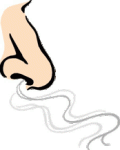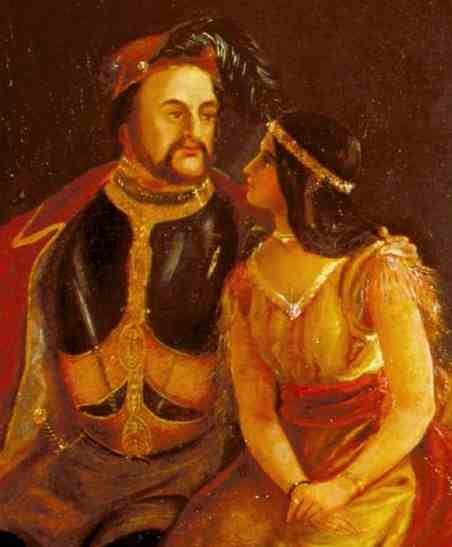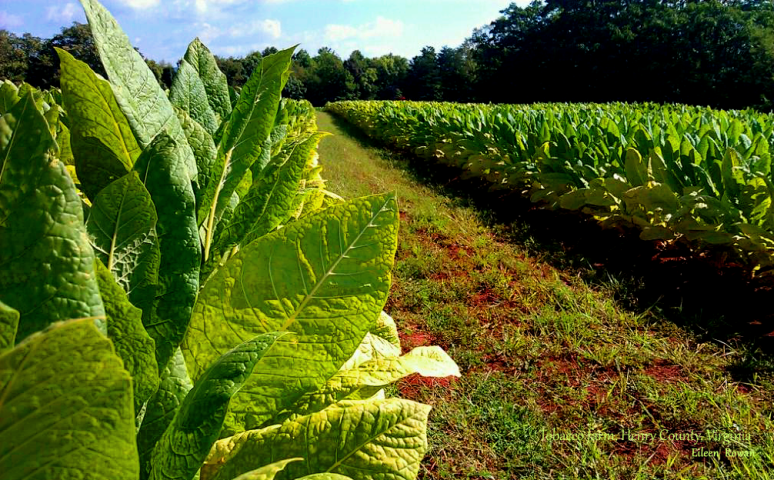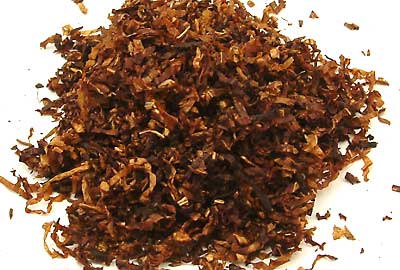At the latest Heukelum meeting I talked to fellow PRF-member Franz. Besides a fondness for old English made pipes (except Dunhill) he also very much likes the tobaccos made by the well known J.F. Germain & Son company from the British Channel Islands. Throughout the time I know Franz I was able to smoke quite a few Germain-made samples provided by him. Now he also did not disappoint me because from England he had ordered a vast amount of Germain Rich Dark Flake! I always wanted to try that one because according to a lot of stories it is similar to the famous Esoterica Tobacciana Stonehaven. I asked Franz if I could fill up a decent sized sample bag so I could compare it to Stonehaven at home. With a smile he said: go ahead!
![]() Background information:
Background information:
Rich Dark Flake: Unfortunately I have very little background information about Rich Dark Flake. It is only available in the UK and is sold solely in bulk and not in tins. According to Mr Germain some of their blends maintained their recipe for 60 years. If that is the case with Rich Dark Flake, nooo idea.. I would love to hear from some elderly English pipe-smokers how long they are buying the blend.
Stonehaven: The origins of Esoterica Stonehaven are easier to trace. The range of Esoterica tobaccos was founded by Steve Richman, the owner of the Piedmont Tobacconist in Oakland, somewhere halfway the 1980’s. He was looking for someone who could produce his blends. J.F. Germain & Son heard about his interest and made contact through the British embassy. They must have been what Steve Richman was looking for because they started doing business together immediately. For the evaluation of the created blends Steve Richman founded a panel in which GL Pease also took place. Stonehaven is the only blend in the Esoterica range which includes Burley.
 Package/tin description:
Package/tin description:
Rich Dark Flake: “A great medium to strong dark flake made using a combination of Virginia and Burley tobaccos. Very similar to the popular Germains Stonehaven blend.” Rich Dark Flake comes in standard plastic pouches of a variety of gram weights with a lot of health warnings and in the same gold-coloured sealed bag as Stonehaven. It is always hit or miss if it comes all broken up or in thin juicy flakes.
Stonehaven: “A marriage of air-cured leaf and Burley with selected dark Virginia. Hard pressed and aged to produce brown flakes with dark undertones. A traditional English flake favoured by experienced pipe smokers.” Stonehaven comes in a gold-coloured sealed bag of 8 ounce with on it a simple but elegant label. As far as I know it never was available in tins.
 Contents/cut:
Contents/cut:
Rich Dark Flake: Burley and Virginia. The flake looks dark, long and thin but just not as thin as Stonehaven. On the picture the flake looks a bit broken up but this comes or from the journey to Franz, him dividing it in smaller portions and finally me putting it in a sample bag, or it was a batch which was a bit broken up.
Stonehaven: The same as Rich Dark Flake: Burley and Virginia. Apart from the slightly thinner cut both flakes look the same. According to Mr Germain Stonehaven is made with 22 cuts an inch. To me this is the thinnest flake I know of.
 Smell from the pouch/bag:
Smell from the pouch/bag:
Rich Dark Flake: When I hold the tobacco under my nose I smell milk chocolate, liquorice, treacle, leather, hay, raisins and some “earthiness”.
Stonehaven: Upon opening the mason jar in which I keep the tobacco I am greeted by a whiff of dark chocolate and some kind of liquor (cognac?) which reminds me of certain Belgian bonbons. Close to my sniffing organ the chocolate still dominates with a faint odour of hay and treacle. Obviously Stonehaven has a “darker” smell than Rich Dark Flake.
 Taste:
Taste:
Rich Dark Flake: Already after the first few puffs you know you are on to something good. It has an “ancient”, traditional typical tobacco flavour to which only British manufacturers hold the secret. The first part of the bowl is utterly delicious and the creamy, rich flavours I encounter remind me of the typical Dutch “kerststol“: yeast, butter, (brown) sugar and almond. I did even taste some hints of dried fruit (plum?) and raisins. In the second part of the bowl the burley rears its head, the flavours deepen and the tobacco becomes more “manly”. A certain leathery earthiness develops and the sweetness sometimes gives way a bit to a pleasant bitterness. The flakes harmoniously burn down to a fine grey ash with no gooey stuff left behind.
Stonehaven: Dark chocolate hits my taste buds upon lighting and with the first couple of puffs. Pretty fast a dark sugary flavour comes in which diminishes the chocolate tones. There is not as much going on as with Rich Dark Flake in my opinion but the overall taste is excellent and harmonious. Here also a rich and creamy smoke but with a darker edge. Halfway the bowl you can really notice the burley (kept in check with a dark treacle sweetness) and the smoke becomes even deeper, fuller, with hints of nuttiness. Stonehaven clearly has a higher amount of burley than Rich Dark Flake. I detected nothing in the smoke itself of the liquor I smelled before on the bare flakes. Stonehaven also burns down to a fine grey ash.
Miscellaneous:
Rich Dark Flake / Stonehaven: I don’t know how they do it but I seldom have tongue-bite with British made tobaccos. Rich Dark Flake and Stonehaven are no exceptions, even though they contain burley which has a tendency to cause pain on my tongue. They both smoke deliciously cool. Because of the thinner flakes the combustibility is good although they benefit from a bit of drying time. Nicotine-wise Stonehaven packs a bit more punch in my opinion and it is advisable to smoke both tobaccos after a good meal.
 Room-note:
Room-note:
Rich Dark Flake / Stonehaven: Both tobaccos I could actually smoke in the vicinity of my girlfriend Ellen. Not that she liked the odour of the smoke but it was bearable. Especially with Stonehaven I detected a faint cigarette like smell in the morning when I came downstairs but nothing too bad.
 Price:
Price:
Rich Dark Flake: At MySmokingShop you pay £11.65 (± $18.24 /± €14.62) for a 50 gr. pouch and it seems the stuff is readily available. But beware, the shop does not ship to the USA..
Stonehaven: At 4noggins you pay $29.95 (± €24,-) for an 8 ounce bag. IF you can get it. Like so many offerings from Germain Stonehaven sells out almost the minute it hits the shop.. Oh, you can often get it on ebay but then an 8 ounce bag will set you back at over $ 100..
 Conclusion:
Conclusion:
In my opinion Rich Dark Flake and Stonehaven are not the same. Like Mr Germain said, they are similar. But not too similar. In Rich Dark Flake Virginia is the main component and in Stonehaven burley plays the leading role. For me in Rich Dark Flake there is more going on, more flavours, more sophistication. One of the few magnificent traditional British tobaccos. My mouth waters at the thought of some well-aged Rich Dark Flake.. Yummieyummieyummie! Stonehaven is more “Americanized”, an occasional treat and no all-day smoke but nonetheless superb. Very broadly speaking I think of Rich Dark Flake as milk chocolate and of Stonehaven as dark chocolate. The first I can eat all day long but the second is only tasty now and then. But then again, if you are a lover of dark chocolate… I would like to end with a thank you to Franz for making this blogpost possible!





